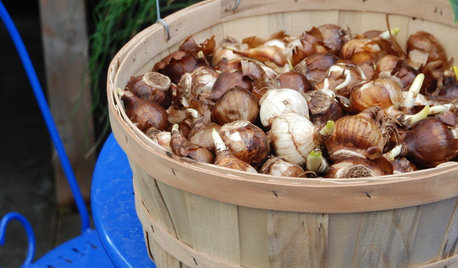(Please excuse cross-posting with another thread)
I have a question for everyone: Is there a market for a new and comprehensive book on tomatoes? By that, I mean one that covers, at least to some extent, everything about tomatoes that a tomato enthusiast/aficionado/junkie/addict/head might want to know (and maybe more). I am considering writing such a book, and in fact already have prepared an outline and introduction. But before I put a year or two's work into it, I would very much appreciate any opinions anyone may have on the subject.
What I have in mind is something that would cover at least the following subjects:
1. Biology and cultivation (including different species and cultivars),
2. Genetics and genetic modification (e.g., sad story of the Flavr Savr gene),
3. Origin and evolution (meet your cousin, the tomato),
4. World-wide diffusion and subsequent history (how did the tomato get to India and China, anyway? The English? The Portuguese? The Spanish? One author suggests early sea contact with Peru)
5. Adoption and use in different food traditions (e.g., how do tomatoes fit in with the religious aspects of Indian food tradition?),
6. Health aspects (e.g., effect on prostate and lung cancer, macular degeneration, sun damage to skin),
7. Commercial and economic issues (do they really eat 200 pounds per person per year in Egypt?),
8. Connections with famous people (e.g., Ronald Reagan),
9. Film and literature (nobody should miss Attack of the Killer Tomatoes or its sequels),
10. Myths (e.g., the Robert Gibbon Johnson story) and misconceptions,
11. Tomatoes and sex (no misconceptions there, and no conceptions, either, I suppose [smile]),
12. Enthusiast organizations and festivals (the most spectacular is in Spain),
13. Etymology of popular and scientific names (where did the name lycopersicum -- Wolf Peach -- come from?), and
14. Home growing and cooking (somewhat).
I know of course that there are many books on how to grow tomatoes, and many recipe books, and I certainly don't intend to compete with such books. What I am thinking of is something that would not only contain quite a lot of information about a broad range of subjects relating to tomatoes, but also use tomatoes as a lens to look into some of the things mentioned (history, biology, even cosmology: for example, without supernovas, tomatoes could not exist).
Needless to say, with such a range of topics, I could only cover most things in a fairly summary manner; the selling point would be its breadth, not its depth on any subject. I would make reference to other books for more depth on a given subject.
Would you buy such a book? At Amazon prices? Would it be better to have lots of pictures, maps etc. and a higher price or fewer of such things and a lower price?
There the various books on other food items, some of which have done quite well in the market, notably Mark Kurlanskys three books, on cod, salt and oysters, respectively. There is also one on the potato by Larry Zuckerman and one on the olive by Mort Rosenblum.
Each of those is, however, somewhat less comprehensive than what I outlined above, which brings me to a second question: Should I cut back the scope and make it a bit deeper in the areas retained? If so, what should I leave in or keep out? Should I make it pretty much purely a history book with a particular twist, like KurlanskyÂs? Or would that narrow the audience too much?
Just to elaborate for a moment, a historical work would start with the break-up of Pangaea, the latest supercontinent, which started drifting apart 200 million years ago. The breakup resulted in separate biospheres developing in the Americas and Eurasia, which meant that the tomato was unknown to the bulk of humankind until the the last 500 years. During that time humans have, from a biological perspective, re-united the divided parts of Pangaea. Before they did so, the tomato spread from its origin in the alto plano of the West Coast of South America to what is today Mexico and Central America, but not to what is today the US (why it didnÂt is an interesting issue I would try to explore) or anywhere else. In the last 300 years or so, it has been adopted into almost every food tradition on earth.
How and when it did so is a story that, to my knowledge, has never been fully told, except as it relates to the US (in Andrew SmithÂs book cited below). Telling that story would allow me to bloviate on various subjects such as international trade routes and social history.
As I write that last paragraph, it occurs to me that this story alone would be quite an undertaking, one that could not really be done justice in a single chapter of a broader book. But then ÂÂare the 30 million home tomato gardeners in the US going to buy a history book? Or will they want growing tips, recipes, cosmology, sexual innuendo and genetics and such thrown in? I suppose I could include some of those topics in a book that is primarily a history, but would a book that is primarily a history that grab their attention, or, more relevantly, give them an uncontrollable urge to buy it?
Hey, maybe I could include OprahÂs favorite tomato recipes. I could put that in a chapter entitled, "the tomato and popular culture."
I would appreciate any thoughts any of you may have.
Thanks very much,
Jonathan
P.S.: I have looked at the following, none of which (it seems to me) is quite what I have in mind:
1. Tantalizing Tomatoes, ed. by Karen Davis Cutler (New York 1997)
2. The Tomato in America, by Andrew Smith (Columbia, S.C. 1994)
3. The Great Tomato Book, by Gary Ibsen (Berkeley 1999)
4. The Great Tomato Book, by Sheila Bluff (Short Hills, N.J. 1999)
(The preceding two books have the same title and were published in the same year; rather remarkable.)
5. In Praise of Tomatoes, by Steven Shepherd (New York 1996)
6. Exploring the Tomato, by Mark Harvey, Steve Quilley and Huw Beynon (Cheltenham, U.K. 2002)
7. All About Tomatoes, by Walter L. Doty (? 1981)
8. Terrific Tomatoes, by Mimi Luebbermann and Faith Echtermeyer (? 1994)
9. 100 Heirloom Tomatoes for the American Garden, by Carolyn J. Male (New York 1999)
















clfo
jonathan_eOriginal Author
Related Professionals
Ferndale Landscape Architects & Landscape Designers · Kenmore Landscape Architects & Landscape Designers · Lyons Landscape Architects & Landscape Designers · Otsego Landscape Architects & Landscape Designers · Palm Springs Landscape Architects & Landscape Designers · Arden-Arcade Landscape Contractors · Azalea Park Landscape Contractors · Fort Worth Landscape Contractors · Pomona Landscape Contractors · Vadnais Heights Landscape Contractors · Berkeley Fence Contractors · Bixby Fence Contractors · Catonsville Fence Contractors · Gainesville Fence Contractors · Salt Lake City Fence ContractorsTonyfromOz
ronalawn82
jonathan_eOriginal Author
pinetree30
jonathan_eOriginal Author